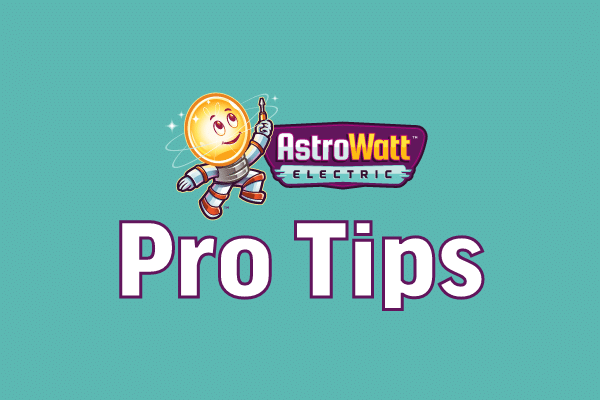
At some point in your life, you have probably experienced a power surge. A power surge happens when more voltage than normal unexpectedly passes through electrical wires and into your devices. A surge can be anywhere from five volts to thousands of volts, depending on the cause. They can be caused by things both inside and outside of your home and they happen more often than one would expect. However, there are multiple things you can do as a homeowner to prevent damage to your home and the devices within it.
What Causes a Power Surge?
When people think of power surges, the most common cause that comes to mind is a lightning strike. While lightning IS an external cause, a power surge is more commonly caused by something inside your home. Included below are common external and internal factors to be aware of.
External Factors
- Lightning Striking Utility Equipment
- Trees Touching Power Lines
- Animals Getting into Transformers
- Power Coming Back After a Power Outage
Internal Factors:
- Large Devices Turning On or Off – When something like your air conditioner unit turns on or off, it diverts electricity to other places which could cause them to become overloaded.
- Overuse of Extension Cords – If you plug too many things into an extension cord, you may overload the outlet and cause a flow of electricity to the outlet that is too much for it to handle.
- Overloading a Circuit – According to the National Electrical Code (NEC), large appliances such as refrigerators are required to be on a dedicated circuit, due to the amperage they require to run. If you put other electrical items on the same circuit as a large appliance, you will overload the circuit. A very common issue we see is a refrigerator or freezer plugged into a garage circuit.
How Likely is a Power Surge?
Small power surges occur frequently throughout the day when the flow of electricity is interrupted and then resumes. A typical power outlet can supply between 0 and 169 volts, but it becomes dangerous when the voltage suddenly exceeds 169 volts. On the other hand, extremely large power surges, such as those caused by a direct lightning strike, are less common.
Signs That a Surge Occurred
Power surges can cause major damage to your home’s electrical system and devices that are connected to it. The damage can be immediate or cause devices to degrade more quickly over time. It can be very dangerous, and even cause a fire in some cases. If you have any of the signs below, we recommend calling a licensed electrician. They will make sure that your home is safe after a possible power surge:
- Flickering, Buzzing, or Dimming Lights
- Discoloration, Smoking, Warm, or Vibrating Outlets
- Burning or Strange Smell Near Outlets
How to Prevent Damage from a Power Surge
There are a few ways to protect your home and devices from a power surge. AstroWatt recommends the following:
- Using a Surge Protector Power Strip or Battery Pack That’s UL Listed – The Underwriters Laboratory is one of the oldest safety certification companies. They inspect multiple products to ensure they meet their standards and are safe to use. Keep in mind what you may be plugging in, as it is very important not to overload the power strip.
- Get an Electrical Wiring Inspection – Have an electrician do a safety inspection of your home to be sure you have the correct kind of wiring and the correct load on each circuit.
- Install a Whole Home Surge Protector – A whole home surge protector can be installed near your main electrical panel to protect your whole home at once.
If you call AstroWatt Electric for any electrical service, our technicians will perform a safety inspection. This inspection includes checking to be sure your wiring is safe, and your home is protected with a surge protector. If you live in Cary, Raleigh, Chapel Hill, Apex and the surrounding Triangle area, give us a call today at 984-600-0100.


